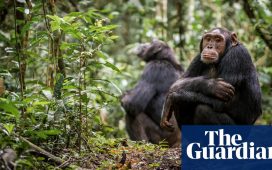On a spring day in April last year, wildlife law enforcement officers in Wyoming made an alarming discovery. While patrolling national forest land in the state’s north-west, they came across an overflowing stack of 40 antlers piled among the trees and concealed with branches.
The antlers, they realised, were part of an illegal poaching cache. Collecting antlers has long been a favorite pastime in Wyoming, where the state’s bull elk spend most of the summer growing massive antlers before shedding them the following spring. There are, however, strict limits on when people are allowed to gather these antlers – which typically fetch high dollars to be used as decorations, dog chews or craft products – from public lands.
Antler gathering season on forest lands opens on 1 May every year and is closed year round on a nearby elk refuge, meaning this pile had clearly been covertly harvested and hidden.
After weeks of investigation, federal and state law enforcement officers discovered an Idaho man named Jonathan Lee Cox had illegally collected more than 1,000lbs of antlers from forest lands and the refuge worth a whopping $18,000. He pleaded guilty in March, was fined $6,000 in federal court, was banned from Wyoming public land and from hunting anywhere in the world for three years.
His case highlights a growing problem throughout western Wyoming, where people search for an annual payday at the expense and welfare of the state’s elk, mule deer, bighorn sheep and moose. And this year’s season opens again soon, including a new regulation requiring any non-Wyoming resident to wait another week, until 8 May, to begin collecting. The combination of rule change and increasing popularity has law enforcement officers particularly wary of antler poaching.
“This comes down to a wildlife harassment issue,” said Brad Hovinga, the Wyoming game and fish department’s wildlife supervisor in the Jackson, Wyoming region. “The people who are in those closed areas and collecting antlers when they shouldn’t be, are disturbing wildlife during a time when it’s very important for them not to be disturbed.”
Faced with too much human activity, animals like elk, bighorn sheep or mule deer burn valuable calories they need to survive at the end of winter, biologists say. Too much stress and too few calories can lower birth rates and even weaken some animals to the point they die.
But as wildlife officials are realizing, the temptation to make money is overriding the concern for wildlife or fear of getting caught.
Depending on the year, shed antlers can fetch about $15 a pound, and a large elk antler can weigh 20lbs. That price is for antlers used for dog chew toys, knife handles, medicine or even buttons. A large set of freshly dropped antlers used as decorative wall mounts can score someone thousands or even tens of thousands of dollars, said Hovinga.
Almost 20 years ago, as antler value increased and interest in collecting them exploded, Wyoming wildlife officials noticed a troubling trend: more and more people traipsing around elk ranges during the winter on 4-wheelers, horseback and foot, causing animals to move around at their weakest and most fragile times.
In some cases, people even identified individual animals with particularly valuable antlers and pushed them into trees or fences or placed tangles of rope above illegal bait hoping to snag the antlers off the creatures’ heads before they fell naturally.
So about 15 years ago, Wyoming started closing lands to antler collection from 1 January to 1 May to give wildlife respite as they lose their antlers and before the snow melts and grass greens. People can still hike and recreate on those lands, but they are prohibited from picking up any antlers they stumble upon.
The new regulations helped, Hovinga said. And now, on 30 April, hundreds of cars line up to enter those public lands on the opening morning of the official antler gathering season, stacking up at each roadside pull off, trailhead and wide spot on highways.
But antler poaching continues, despite annual prosecutions of people such as Cox who are slapped with hefty fines and loss of privileges. In 2022, a man named Joshua Anders Rae was sentenced to 90 days home detention, 90 days probation and was banned from federal lands for five years for illegally collecting shed antlers. Five years earlier, he’d been sentenced for illegally collecting in the same area.
Spring has now become one of the busiest times of the year for game wardens, Hovinga said, rivaling even fall hunting seasons.
“There are lots of calls and reports and efforts to catch folks in the act who are trying to cheat the system and go in early,” he said.
The National Elk Refuge, a chunk of federal land protected for thousands of wintering elk, prohibits almost all human disturbance including shed antler collection with the exception of one fundraising collection and antler sale each year. That means when neighboring forest service lands open, the chances of poaching increase, said Frank Durbian, the refuge’s project leader. The refuge brings in an additional five to seven officers each year to patrol the borders and keep people from trespassing.
The best solution to the growing problem is education and continued prosecutions, Hovinga said. Even in the vast expanses of hundreds of thousands of acres of forested lands, game and fish wardens feel they can be remarkably effective using new tools such as thermal imaging that allows wardens to see people in those areas at night, the most common time of day for antler poaching.
“It’s not that we don’t want people to have antlers,” Hovinga said. “It’s about the protection of wildlife.”






